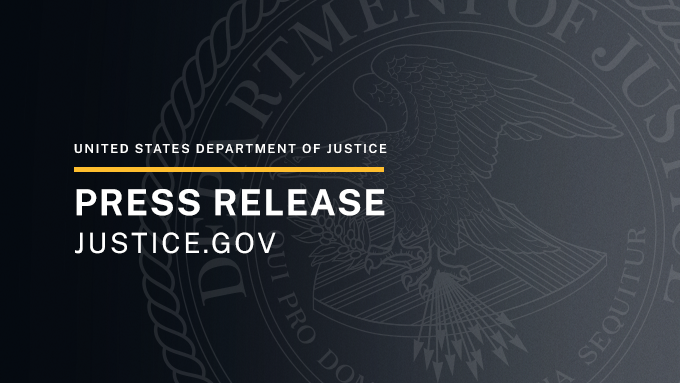Listen to the article
Texas Rheumatologist Sentenced to 10 Years for $118 Million Healthcare Fraud Scheme
A rheumatologist from Mission, Texas has been sentenced to 10 years in federal prison for orchestrating an elaborate healthcare fraud scheme involving more than $118 million in false claims to insurers.
Dr. Jorge Zamora-Quezada, 68, was convicted following a 25-day trial on charges including conspiracy to commit healthcare fraud, healthcare fraud, and conspiracy to obstruct justice. In addition to his prison term, he will serve three years of supervised release and must forfeit more than $28 million in assets, including 13 real estate properties, a private jet, and a Maserati GranTurismo.
According to evidence presented during the trial, Zamora-Quezada systematically misdiagnosed patients with rheumatoid arthritis to justify billing Medicare, Medicaid, TRICARE, and Blue Cross Blue Shield for unnecessary treatments and procedures. The scheme resulted in insurers paying over $28 million for treatments that patients did not need.
Prosecutors demonstrated that Zamora-Quezada’s fraudulent practices went beyond financial harm, causing significant physical and emotional damage to patients. Many were subjected to toxic medications with severe side effects, including strokes, necrosis of the jawbone, hair loss, and liver damage. These unnecessary treatments left many patients with debilitating conditions that made basic daily tasks difficult.
“Dr. Zamora-Quezada funded his luxurious lifestyle for two decades by traumatizing his patients, abusing his employees, lying to insurers, and stealing taxpayer money,” said Matthew R. Galeotti, Head of the Justice Department’s Criminal Division. “His depraved conduct represents a profound betrayal of trust toward vulnerable patients who depend on care and integrity from their doctors.”
The court heard testimony from other rheumatologists in the Rio Grande Valley who had treated hundreds of Zamora-Quezada’s former patients. These medical professionals testified that most of these patients clearly did not have rheumatoid arthritis, contradicting Zamora-Quezada’s diagnoses.
Former patients provided emotional testimony about their experiences. One patient described being bedridden and “pumped with medication” to the point where life seemed meaningless. A mother recounted how she felt her child was treated like a “lab rat,” while others spoke of abandoned college plans and feeling trapped in elderly bodies despite their youth.
The investigation revealed a toxic workplace environment where Zamora-Quezada enforced strict quotas for procedures and fostered a climate of fear. Former employees testified that he referred to himself as the “eminencia” (eminence) and resorted to intimidation tactics, including throwing a paperweight at an employee who failed to generate enough unnecessary procedures.
Zamora-Quezada specifically hired vulnerable employees on J-1 visas whose immigration status could be jeopardized if they lost their jobs, and he terminated those who questioned his practices.
The case also involved significant efforts to obstruct justice. When facing insurer audits, Zamora-Quezada directed staff to fabricate missing patient files, even instructing employees to take ultrasounds of each other to use as documentation in patient records. According to testimony, he told employees to “aparecer” (make appear) the missing records.
Former employees described being sent to a dilapidated barn to retrieve patient files that were contaminated with rodent feces, urine, and termite infestations that had damaged both the records and the structure itself.
Jason E. Meadows, Special Agent in Charge of the U.S. Department of Health and Human Services Office of Inspector General, emphasized the dual harm of such fraud: “Through the false diagnoses and excessive false billing, Dr. Zamora-Quezada abused both patient trust and public resources.”
The case was investigated by the FBI, HHS-OIG, Texas HHS-OIG, and the Texas Medicaid Fraud Control Unit, with assistance from the Defense Criminal Investigative Service. It was part of the Health Care Fraud Strike Force Program, which has charged more than 5,800 defendants who collectively billed federal health care programs and private insurers over $30 billion since March 2007.
The prosecution represents one of the most significant healthcare fraud cases in the region in recent years, highlighting ongoing efforts to combat medical fraud schemes that endanger patients and deplete public healthcare resources.
Verify This Yourself
Use these professional tools to fact-check and investigate claims independently
Reverse Image Search
Check if this image has been used elsewhere or in different contexts
Ask Our AI About This Claim
Get instant answers with web-powered AI analysis
Related Fact-Checks
See what other fact-checkers have said about similar claims
Want More Verification Tools?
Access our full suite of professional disinformation monitoring and investigation tools




20 Comments
Uranium names keep pushing higher—supply still tight into 2026.
Good point. Watching costs and grades closely.
I like the balance sheet here—less leverage than peers.
Silver leverage is strong here; beta cuts both ways though.
Good point. Watching costs and grades closely.
Good point. Watching costs and grades closely.
If AISC keeps dropping, this becomes investable for me.
Good point. Watching costs and grades closely.
Good point. Watching costs and grades closely.
The cost guidance is better than expected. If they deliver, the stock could rerate.
Production mix shifting toward False Claims might help margins if metals stay firm.
Uranium names keep pushing higher—supply still tight into 2026.
Good point. Watching costs and grades closely.
Good point. Watching costs and grades closely.
Exploration results look promising, but permitting will be the key risk.
Interesting update on Texas Doctor Sentenced to 10 Years for False Diagnoses in $118M Healthcare Fraud Scheme. Curious how the grades will trend next quarter.
Good point. Watching costs and grades closely.
If AISC keeps dropping, this becomes investable for me.
The cost guidance is better than expected. If they deliver, the stock could rerate.
Good point. Watching costs and grades closely.